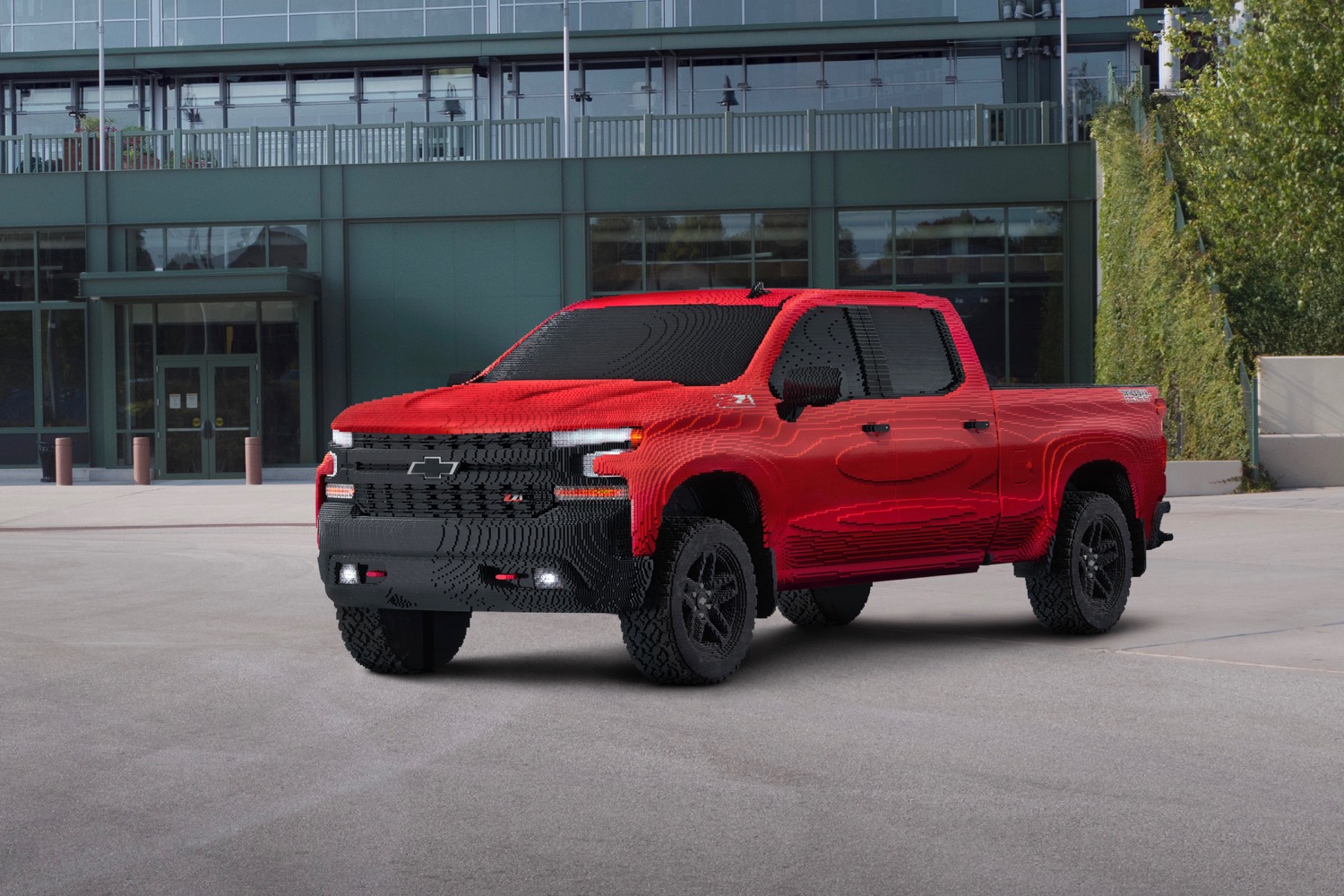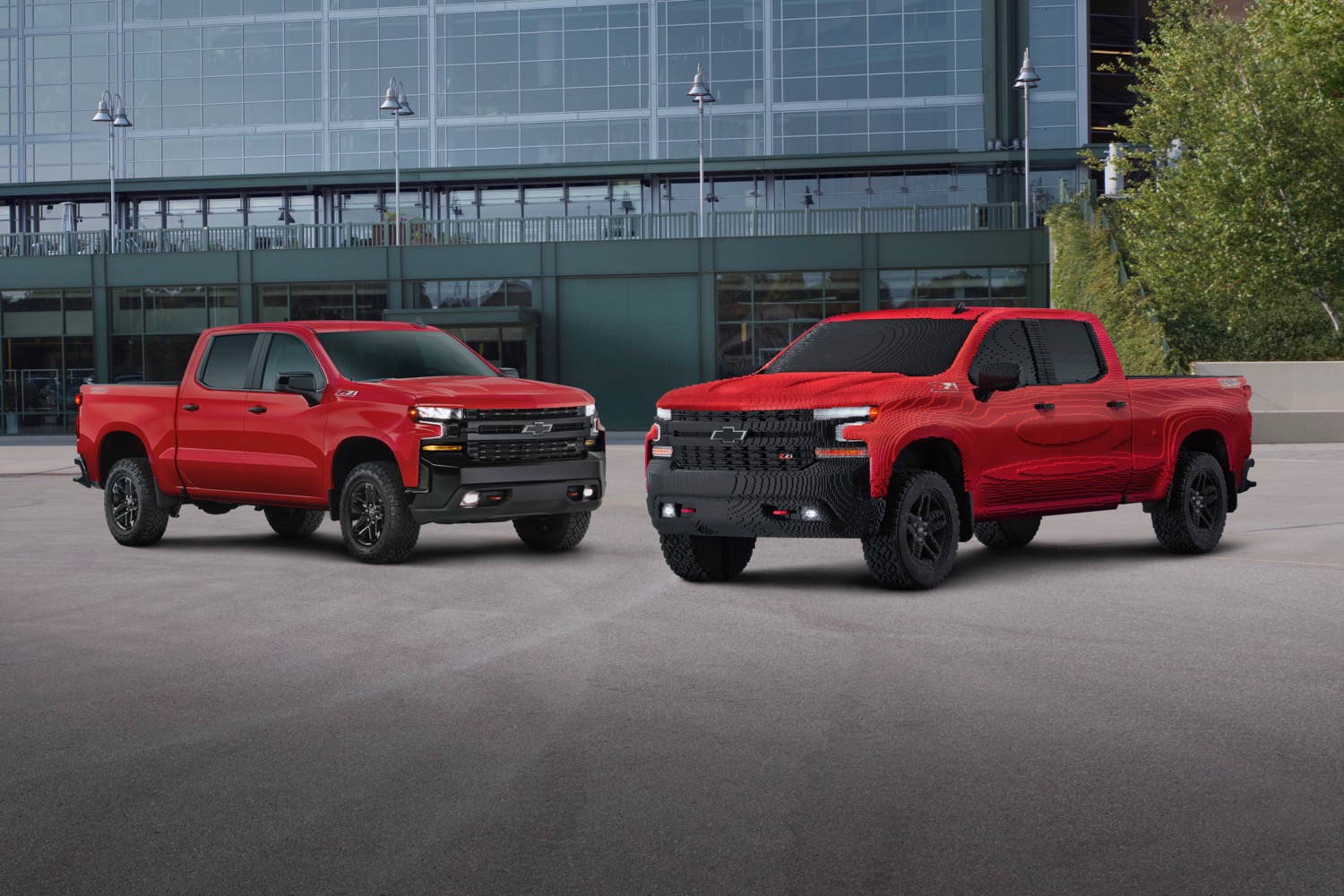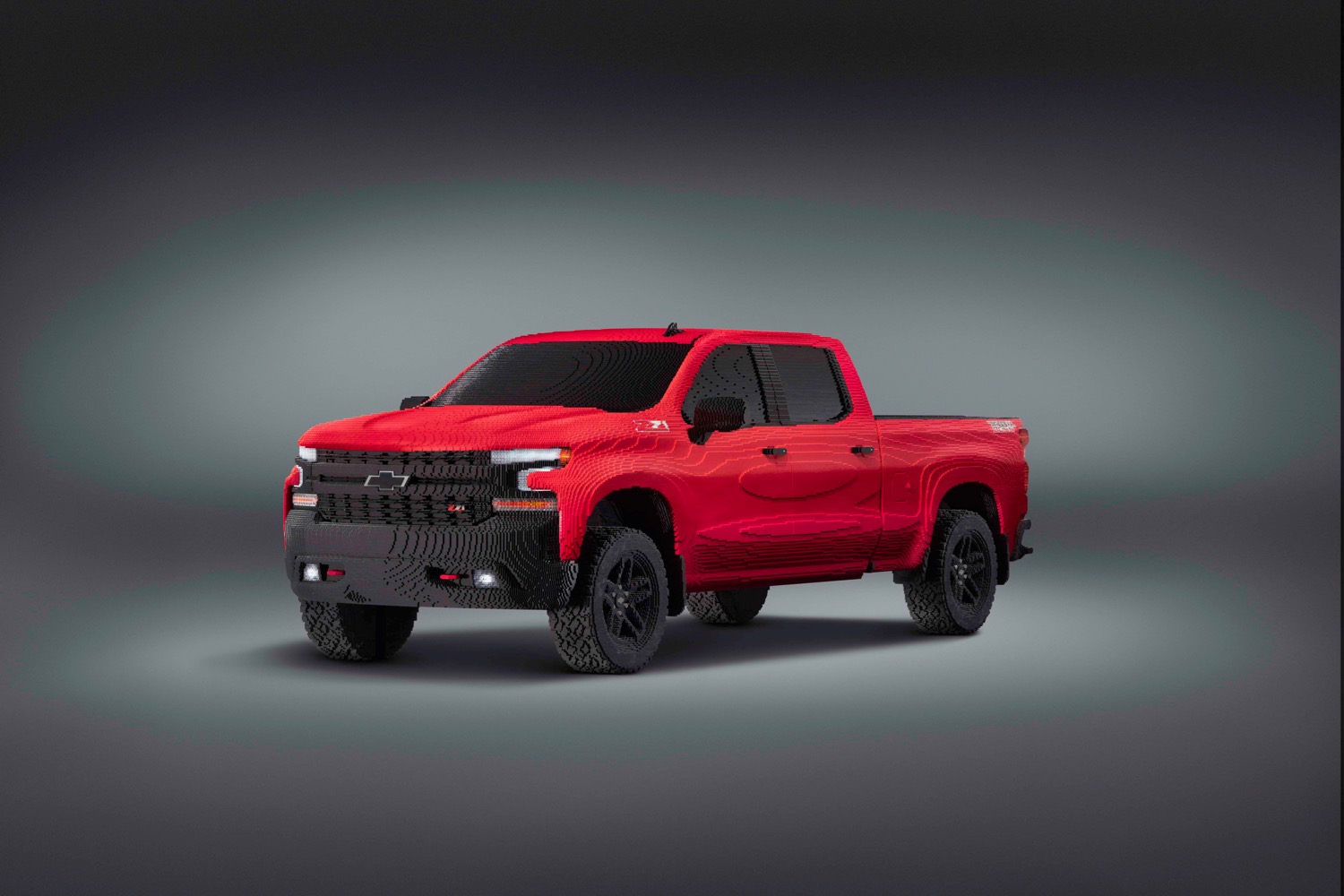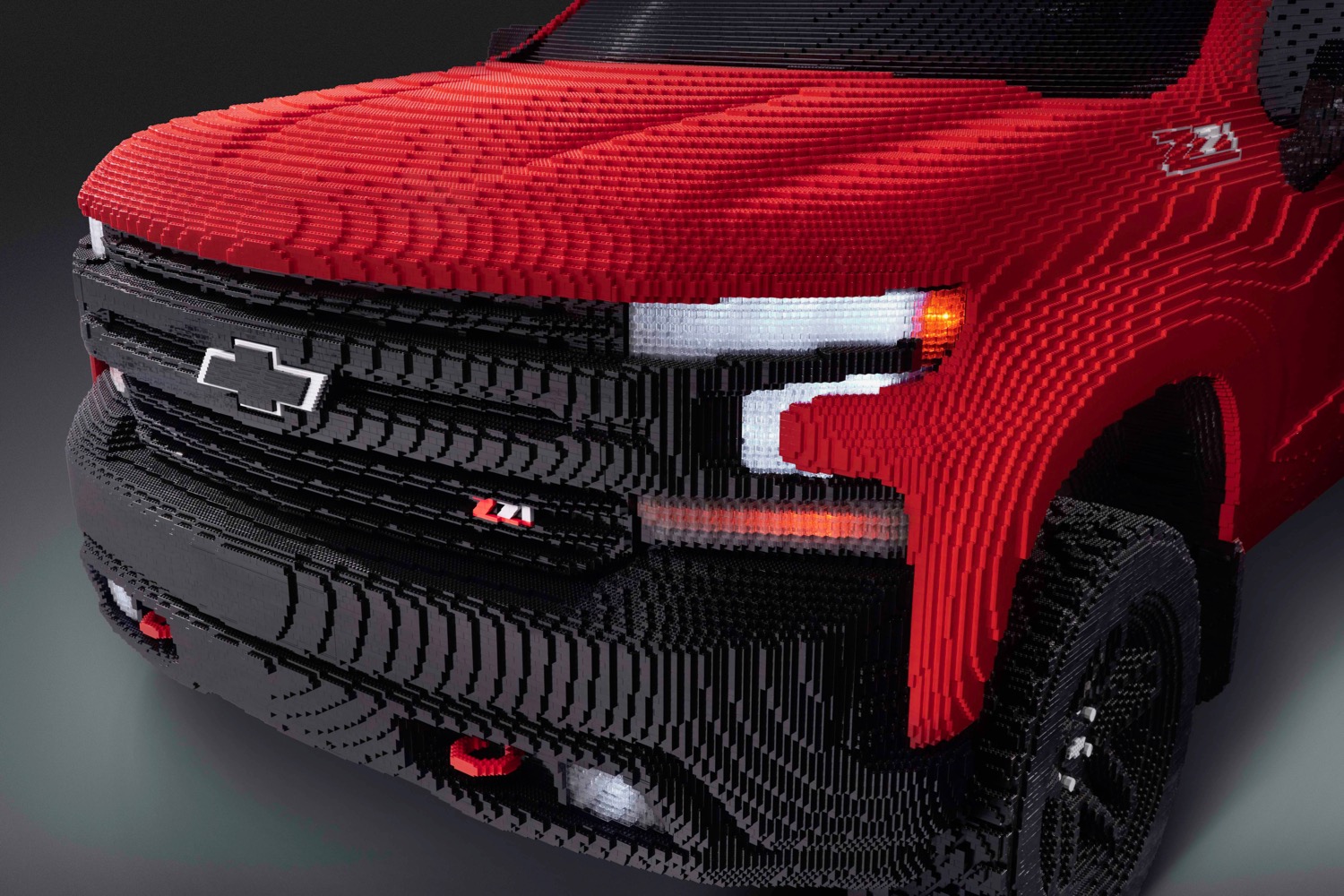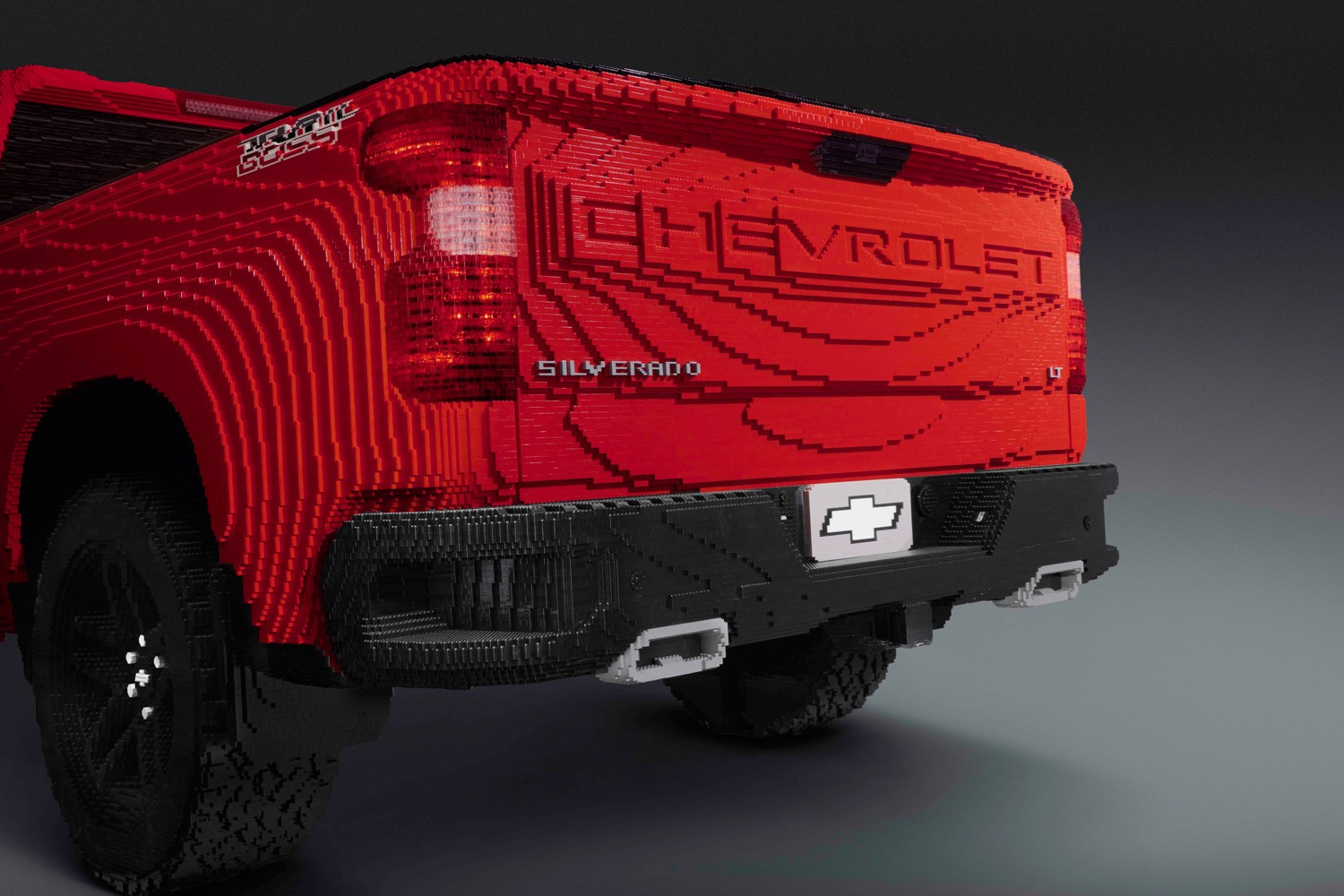From aluminum to carbon fiber, automakers are trying out all sorts of lightweight materials in pickup trucks to improve fuel economy and payload capacity. But this Chevrolet Silverado really pushes the limits.
This truck is made entirely of Lego bricks — 334,544 of them, to be precise. It’s a life-size model of the 2019 Chevy Silverado 1500 LT Trail Boss built to promote The Lego Movie 2: The Second Part, which hits theaters February 8. The Lego Silverado Trail Boss will be displayed at the 2019 Detroit Auto Show, and a miniature version of the Silverado High Country model will appear in the movie.
The life-size Silverado model was built by 18 Lego “Master Builders” at the company’s studio in Enfield, Connecticut. It took the build team 2,000 hours to assemble the truck, which features realistic details like working lights. Chevy previously worked with Lego on a plastic brick version of the Batmobile for The Lego Batman Movie.
The Lego truck weighs 3,307 pounds, compared to the 5,008-pound base curb weight of four-wheel drive, crew cab Silverado models like the 2019 LT Trail Boss that inspired the Lego version. Chevy claims the 2019 Silverado is up to 450 pounds lighter than its predecessor thanks in part to the use of aluminum for the doors, hood, and tailgate. Maybe Chevy should have gone with plastic instead.
The Trail Boss is the most off-road-focused of the eight 2019 Silverado trim levels. Notable upgrades include a 2.0-inch suspension lift, skid plates, a locking rear differential, Rancho shocks, and 18-inch wheels wrapped in Goodyear Duratrac tires. We doubt all of that was replicated in Legos, though.
Since this truck is just a display piece, don’t expect a working engine, either. The real Silverado Trail Boss uses a 5.3-liter V8, which develops 355 horsepower and 383 pound-feet of torque. Chevy offers myriad other engines on different trim levels, including a 2.7-liter turbocharged four-cylinder unit.
As mentioned, this isn’t the first time a car has been replicated in Lego. A life-size McLaren 720S made from 280,000 Lego bricks appeared at the 2017 Goodwood Festival of Speed. But Lego’s Bugatti Chiron replica is an even more impressive achievement. Not only is it a faithful recreation of the 261-mph supercar, but it can actually drive. However, the top speed is a more sedate 12.4 mph.
Updated on January 19, 2019: Added photos.
Editors' Recommendations
- Honda recalls more than 300,000 vehicles over seat belt safety issue
- SpaceX’s Starlink internet service now has more than 10,000 users
- AppleCare fraud scheme used more than 1,000 fake iPhones from Hong Kong
- Spotify finally lets you save more than 10,000 items to your music library
- Instacart plans to hire 300,000 new workers to meet surging demand
